|
MAUSOLEUM of RUKN-I ALAM
|
TAKEO KAMIYA
|
MAUSOLEUM of RUKN-I ALAM
|
TAKEO KAMIYA
|
Although the Islamic army invaded the Indian Subcontinent across the Khyber Pass sporadically from the 8th century, it was much later, at the end of the 12th century, that it grew to full-scale. After Muhammad of Ghor from Afghanistan defeated the Hindu army and occupied Delhi, his general Qutb al-Din Aibak became an independent ruler in 1206, establishing the Slave dynasty, which is so called thus as most of its rulers were soldiers of Turkish slave origin just like the Mamluk dynasty in Egypt.
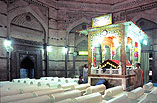
There are two main points that draw attention to the differences between Indian traditional architecture and the newly imported Islamic one. Since wooden architecture had been the main stream in ancient India, and Indian architects and builders had been so deeply accustomed to it, even in the middle ages, when stone architecture had become the main stream, they treated stone as if it had been timber, and continued to build in the trabeated system in stone. Therefore, they did not know the structure of the true arch and true dome, so they needed close to one century to master those structural techniques in Islamic buildings.

Secondly, Indians were most fond of sculpture among all genres of plastic art, so they tended to make even buildings much like sculpture. As compared with the emembranousf character as an asset of authentic Islamic architecture, enclosing courtyards or worship spaces, Hindu architecture displayed a esculpturalf character, pursuing the beauty of configuration to be looked at from the outside.
As the mosque was primarily an introverted architecture with a courtyard encircled with hypostyle halls, Middle Eastern buildings were apt to have no external appearance, buried in a townscape. Such a form could not satisfy Indian people, who, therefore, inclined to prefer and develop mausoleums to mosques as an architectural type, which could be conceived as sculptural pieces of architecture, leaving masterpieces of large mausoleums to posterity more than in any other Islamic regions. 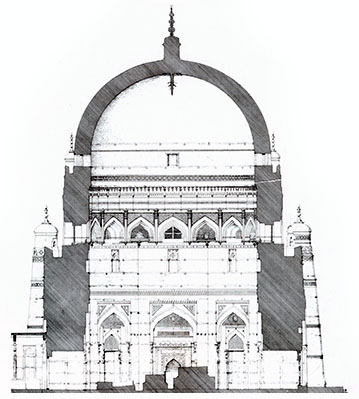
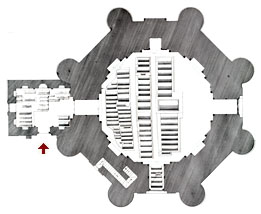 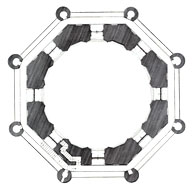
The Mausoleum of the Samanids in Bukhara would have been easily understood by Indian people. Its sculptural figure and ornate ornamental manner on its surface were succeeded to by Indian Islamic mausoleum architecture. When the Tughlaq dynasty of Delhi Sultanat started its construction activity based on the genuine arch and dome, the principal city for it was Multan in current Pakistan. The first Tughlaq Sultan, Ghiyath al-Din, erected his own mausoleum in Multan while he was its governor-general. But later he built a new mausoleum of his own in Delhi after he became Sultan, so he allegedly dedicated the older one in Multan to his deceased religious mentor, Shah Rukn-i Alam . True or not, the two edifices have similar architectural principles and atmospheres as the earliest pieces of Indian mausoleum architecture, such as a single domed tomb chamber, tapered thick walls, the sparsity of windows, archaic impressions, and so on. The difference is brick construction in Multan versus stone in Delhi, where red sandstone is used for the walls and white marble for the dome, luxuriously reflecting the power of the capital.
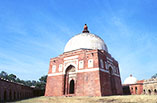
As for their sculptural effects as a whole, that of Multan is superior to Delhi. It takes a three-tier composition on an octagonal plan: the stereobate-like tapered massive first story supports the decorative second story surmounted with a dome. Each corner of the octagon is accompanied with a round tower, functioning as a buttress, on top of which is a spire. Such articulation converted the fortress-like mass into a sprightly formation with a feeling of movement. However, when entering the inside, one can find unexpectedly that this is a single-story building with a high-rise inner space surmounted with a dome over squinches. This is the trick. In order to overcome the thrust of a dome, it is efficient to make lower walls thicker than upper, so the architect of this mausoleum made the upper walls thinner and the lower walls thicker in a tiered state, as if it was a two-story building from outside appearance.
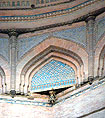
Most mausoleums in Multan are made in this manner, gaining more sculptural formation. Their surfaces are made colorful by bricks combined with glazed tiles, and sporadically inserted with timber in stripes. The timber must have given horizontal tensile strength to the masonry structure, and functioned as rulers when piling bricks. Especially for corbelling part of squinches, they bore the structural role that is difficult with bricks.
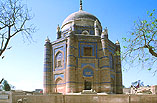
(In "Architecture of Islam" 2006) |